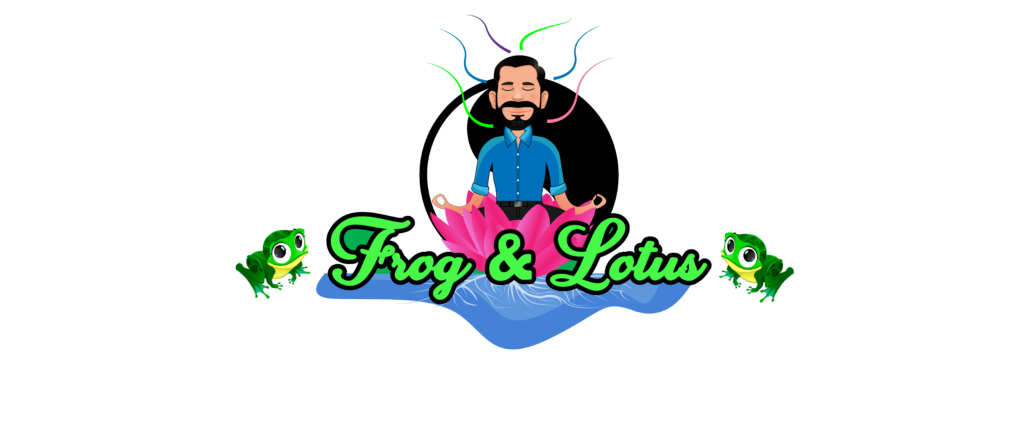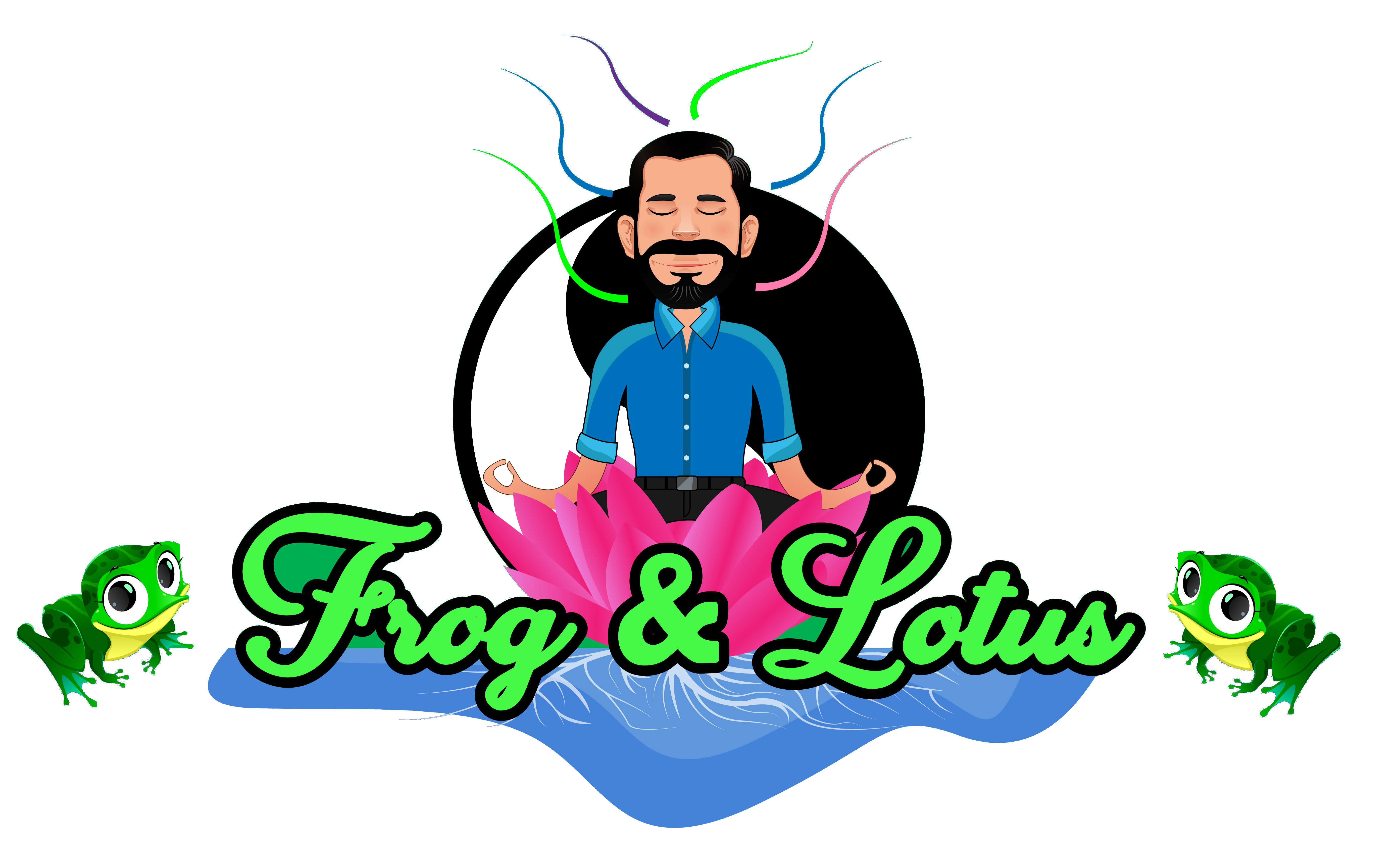I first learned about koans in Zen Buddhist meditation from reading Three Pillars of Zen by Phillip Kapleau. Koans are “a formulation, in baffling language, pointing to the ultimate truth,” according to The Three Pillars of Zen. In the book, Kapleau goes on to explain that “koans cannot be solved by recourse to logical reasoning but only by awakening a deeper level of the mind beyond the discursive intellect.” Being the highly pragmatic, rational and analytical person that I am, this seems next to impossible to me. The idea behind the koan is that monks are to sit in meditation contemplating their assigned koan until, in a flash, they become enlightened. In The Three Pillars of Zen, the koan most frequently referenced is from Mumonkan compiled by Zen master Mumon. The inquiry is this:
“A monk in all seriousness asked Joshu: ‘Has a dog Buddha-nature or not?’ Joshu retorted ‘Mu!’”
I confess that after reading The Three Pillars of Zen and really getting my meditation practice going, I tried to sit with this koan a few times to see if anything would happen. Nothing did. Does a dog have Buddha-nature? I don’t know the answer to this question, but I have most certainly been working to find an answer.
I’ve had dogs for most of my life. My current best canine buddy, whom I love, and is part of our family here on earth today is Smudge. He’s a good boy. Smudge is an eleven-year old Brittany and we picked him up when he was just a pup. I remember clearly the day we got him. We actually thought there might be something wrong with him because as we approached, his little puppy legs melted and he sort of just collapsed. He would get up and then collapse again. Was this some sort of condition we should be concerned about? It turned out that the man who delivered him just really, really loved on him so much from the moment he was born that Smudge developed an incredibly submissive demeanor. This loving taught him to submit anytime someone approached. He would roll over on his belly as if to say, “Please don’t hurt me, now will you please give my belly a rub?” It’s hard to resist not scratching his belly, except when he is covered in grass or mud from whatever he was doing outside minutes earlier. Yet even filthy Smudge is hard to resist.
After our last dog went to doggie heaven but before we decided to bring a new one home, we agreed our next companion would be an active dog that could go running with us. At that time, we were running half marathons regularly and had aspirations of running a marathon someday. So, we wanted a breed that could keep up with us. We decided on a Brittany because this breed is known for its high energy. We wanted a dog that could keep up with us? Ha! We should have searched for a breed that we could keep up with. Apparently, we were quite confident in our own running stamina. Smudge would later show us the truth.
As Smudge grew into adulthood, we took him on longer and longer runs. That dog pulls! As much training as we’ve attempted, we’ve never been able to break him from pulling. Some say Smudge walks us instead of the other way around. Keep in mind he’s only about 40 pounds. I remember once taking Smudge on an eleven-mile run. Afterwards, I was toast and needed to spend the rest of the day on the couch. Smudge wasn’t even fazed. When we got home, he had just as much energy as before we started.
In those days we found only one thing that would tire him out for a little while. My parents lived on a golf course. During visits and after all the golfers were done, we would take the golf cart for rides around the course. We covered eighteen holes, about 6500 yards or a little over 3.5 miles. Smudge would run alongside the cart while we enjoyed the ride. We were amazed by his energy and absolutely loved the time outside. When we got back and he finished slurping and slopping a bunch of water, he would lay down for twenty minutes or so, panting, until he was back up and ready for action again.
We learned pretty early on that if Smudge didn’t get his exercise, he would find other destructive ways of getting his energy out, to include peeing on a rug or chewing furniture and shoes. Smudge is a dog after all. Yes, he has been known to poop or pee in the house. He also used to love to dig holes in the yard and then come inside with his paws covered in North Carolina red clay which he would then track all over the rugs. Yet we love him unconditionally.
Smudge has incredible, innate abilities, specifically his hunting skills. His breed is meant to hunt, yet we have never taken him hunting! Instead he hunts in our yard looking for squirrels, chipmunks, moles and lizards. Every once in a while, I’ll look outside and see him pointing as hunting dogs do, indicating to their master that they’ve located game. This part of evolution truly amazes me. We certainly did not teach Smudge this skill. It is part of his DNA and this dog can hunt! The question remains “Does a dog have Buddha-nature?”
Smudge is now eleven and still full of energy. A lot has happened in the eleven years since he has been part of our family. I still run for exercise but after recovering from a back injury, I don’t run as far as I used to. Generally speaking, my exercise routine includes running three miles a few times per week. At the start of each week, I try to plan out the goals and actions I want to accomplish that week and my runs are almost always on that list. These days, Smudge does not get as many walks as he would probably like. We have a smaller yard now, so he doesn’t have as much room to explore when he is outside. Whenever it’s time for me to go run I often experience some cognitive dissonance before I leave.
“Should I take Smudge with me on my run today?” I ask myself. He would enjoy the exercise outside and my wife would be happy because it would mean she doesn’t have to worry about taking him for a walk. Yet, this question often leads me to feel that my workout is at stake.
For me, a really good run looks like this: I start my GPS watch and run three miles at a respectable pace without stopping, while maintaining my heart rate at a solid level and maximizing the effects on my fitness, finishing with an elapsed time that I can be proud of. Ultimately my measure of a good run is my average pace in minutes per mile. For me, depending on how much I’ve been running, that can be anywhere from eight minutes per mile to ten plus minutes per mile. If I really focus intensely and get myself psyched up, I might be able to get below eight minutes per mile. (Although it’s been awhile since I’ve hit that pace!)
The dissonance comes in because I have these two different objectives that seem to conflict: get the dog some exercise and help my wife or get a really good workout. In the cognitive struggle I often try to convince myself I can do both. “There must be a Both/And solution to this dilemma,” I tell myself.
Smudge has a lot of energy. Even at eleven he still has no problem running an eight-minute mile and most of the time I don’t even need him to run that fast. For me, the problem is that Smudge pulls, hard! He also likes to stop a lot, to poop, to pee, and of course he must stop, sniff and mark his territory often. When he stops unexpectedly, it catches me off guard I end up getting yanked backward from my forward trajectory. Often, Smudge runs faster than I prefer, so I have to keep jerking on the leash and telling him to stop and slow down. It can almost become rhythmic. Jerk, two, three, four, Jerk, two, three, four. This takes a lot of physical and mental energy and it is very distracting.
How can I maintain my mental focus and keep a consistent pace when the dog keeps stopping? Now, one might say we have not done a good enough job training Smudge and there is some truth to this. The dog whisperer could probably have trained him not to pull, to run at his side instead of in front. He also probably could have trained Smudge to understand that running time is not the time to stop sniff, poop, or pee. I’ve been working at this unsuccessfully for eleven years now and have just come to accept that I am not the dog whisperer. Who is the one that really needs the training, me or Smudge? More than once on my runs with Smudge, passersby have lightheartedly commented to me, “that dog is walking you!” Yes, I know this is true. My dog may be smarter than me. So, does my dog have Buddha-nature?
Along my journey of spiritual growth and quest for personal mastery I have developed a meditation practice. It has really worked in helping me to notice my thoughts. This is a skill that most definitely helps me avoid stress and chaos throughout the rest of the day. It is much easier to notice your thoughts when you are sitting, undistracted in peace and quiet. Yet, the practice helps you get better at noticing thoughts and emotions as they arise at times when there is distraction, such as when I’m running and with Smudge.
During meditation my thoughts come incessantly one after another. I let each one pass only for the next one to follow. I have always had a highly introspective and analytical mind which makes it very difficult for me to try and keep it quiet. Most often the best I can do is just keep watching the thoughts come and go. Earlier on in my practice, when a thought would arise, I would attempt to stop it by saying to myself, “Stop” or “Nope, not doing that right now!” I’ve realized that this is just like my runs with Smudge!
We run a little bit, I get into my zone, then before I know it, he’s pulling towards the grass for a quick pee! Then, I jerk at the leash and say “Nope, not doing that right now, you already peed five times on this run!” Wow! Sounds a lot like my meditation. In both cases there is a leash between me and the thing I’m trying to control! I jerk the mental leash every time a stray thought appears, and I jerk the physical leash when Smudge veers off our running path. So, what’s the solution? Non-resistance? In meditation I’ve learned that one must not resist stray thoughts but rather to simply let them be. And if I am gentle with my thoughts they will eventually fade away. Should I just allow Smudge to pull and stop as he wishes. Is that practicing non-resistance? I’m the one holding the leash. Aren’t I supposed to be the one in charge?
A few weeks ago, I had a realization that gave me some clarity. Smudge and I were running along as he stopped to pee after already doing so five other times in the first mile. I felt my frustration well up inside me. I lost control, jerked the leash pretty hard and whipped Smudge back around almost 180 degrees.
“$#@%^&^ Smudge! We’re not ‘effing’ doing that right now! You know, if you don’t stop pulling and stopping to pee every five minutes, I’m just not going to bring you running with me anymore. How would you like that, huh? Then you’ll really be sorry, won’t you?” In that moment I noticed my thoughts and recognized what I was doing.
First, this was obviously a completely empty threat. When I come down the stairs with my running clothes on Smudge knows what I’m about to do and he immediately gets excited. He runs to the back door, his tongue out, mouth open, panting and his little nub tail flickering back and forth. Then, my wife comments, “Smudge is excited,” knowing that he might get exercise which means she won’t have to take him for at least a few hours. Am I really going to let my wife down and leave Smudge at the door, which he will scratch at incessantly while whimpering in sadness for many minutes after I’ve left the house, because I didn’t take him with me?
This was secondary to the realization that my verbal threats to Smudge were really only adding to my own frustration. Smudge is a dog. Do I really think he understands my threats? Like was he really going to say, “OK Dad, I’m sorry please don’t threaten to never take me running again. I promise I won’t stop to pee or poop anymore. And I’ll be a good boy and won’t pull too hard either. Just promise you’ll always take me running with you!” Clearly, that’s what I wanted him to say but he never did. Instead I recognize what had just happened!
I was attached to an outcome and what it meant to have a good workout. Smudge was keeping me from achieving that outcome. My thoughts and desires triggered emotions and I lost my cool. Yet, in the moment I acknowledged that I wasn’t going to stop taking Smudge with me on my runs.
I knew he wasn’t going to stop pulling, sniffing, pooping and peeing. The fundamentals of meditation apply here. I could simply use this experience of running with Smudge as an opportunity to watch my thoughts and just let them be without trying to stop or control them. It is also a great lesson about detachment. Attachment is a great way to lose your cool when things don’t go as hoped or distract you from the outcome.
Perhaps this is really just about re-defining the vision for my desired outcome. Is it really about a fast time measured by minutes per mile? Or is it pleasing my wife, allowing her some space to not worry about walking the dog, and also allowing Smudge the opportunity to be outside doing what he loves and enjoying the time with him, knowing that at 11 years old, there’s only so many miles we have left together?
If you drive by my neighborhood where I run, you might see me with a bag of poop in my hand. That bag of poop is a metaphor for so many things. Among them are reminders that:
- I will always stop to clean up my own mess.
- I have a lot of poop (unhelpful thoughts) floating around in my mind.
- Life is sometimes messy and that we all carry poop around with us. Some just hide it better than others.
Some days I still choose to run alone so I can focus on minutes per mile, but most days I choose to run with Smudge. That’s just how it is. As to the question “Has a dog Buddha-nature or not?” Joshu says “Mu!”




Love this. We are fostering a 25-pound MinPin that reminds a lot of Smudge. Many Zen lessons are learned on a walk-run-sprint-whatever Shiba wants to do 🙂